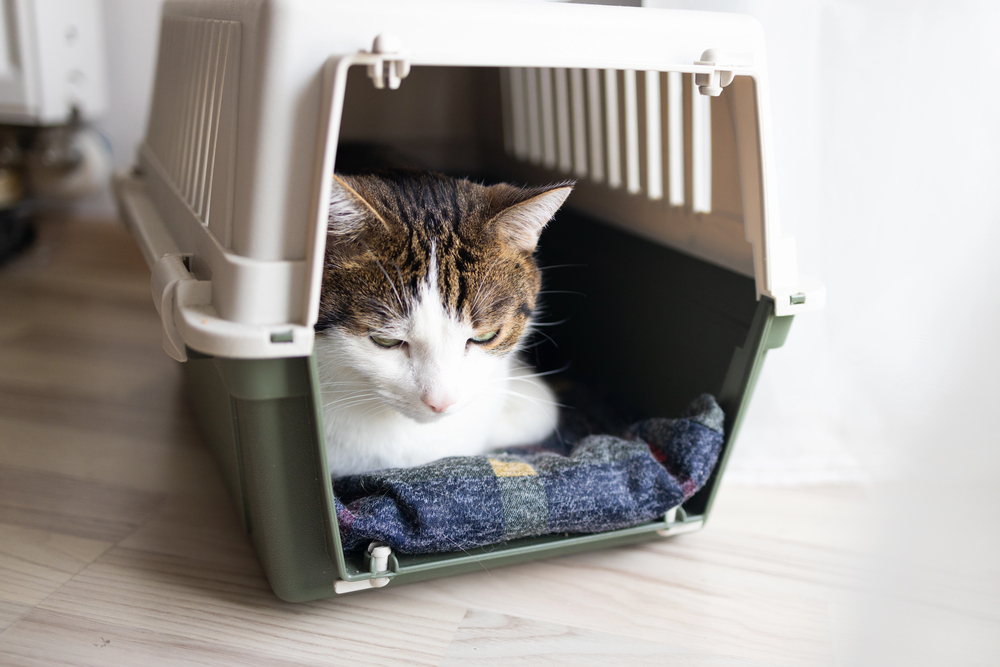
When in doubt, call your vet!
Read Time: 5 minutes
As much as we consider our pets members of the family, they can’t tell us when something’s wrong like a human family member can. That’s why it’s so crucial for pet owners to recognize the signs of a health emergency in their pets so that they can get them the veterinary care they need as quickly as possible.
Signs Your Pet May Need Emergency Veterinary Care
Some pet emergencies are easy to spot. For example, an obvious external injury from an accident would be easy to see and would clearly require a visit to the emergency vet. However, not all emergencies are readily visible and while there are some signs you can keep an eye out for, not every emergency will be the same or even show the same symptoms. Ultimately, you know your pet best and if you’re worried about your furry family member for any reason, don’t hesitate to call your vet.
The most common signs of a pet emergency can include:
Difficulty Breathing
If your pet is gasping, wheezing, or struggling to breathe, this could indicate a serious issue such as a respiratory infection, obstruction, or allergic reaction. Labored breathing is always a red flag and requires immediate veterinary attention.
Excessive Vomiting or Diarrhea
While occasional vomiting or diarrhea isn’t uncommon, frequent episodes—especially if they contain blood or are accompanied by lethargy—can signal poisoning, infection, or gastrointestinal obstruction.
Sudden Collapse or Inability To Stand
A sudden loss of mobility, collapse, or extreme weakness could point to a range of emergencies, including heart issues, seizures, or severe dehydration.
Uncontrolled Bleeding
Bleeding that doesn’t stop after applying pressure for a few minutes is a serious concern. Severe wounds, internal bleeding, or trauma may require immediate surgical intervention.
Seizures
A seizure can appear as uncontrolled shaking, drooling, or disorientation. If your pet has a seizure lasting more than a few minutes or experiences multiple seizures in a row, seek emergency care immediately.
Swollen Abdomen
A bloated or swollen abdomen, especially if accompanied by restlessness or unsuccessful attempts to vomit, can indicate bloat (gastric dilatation-volvulus), a life-threatening condition that requires emergency surgery.
Signs of Pain or Distress
Crying, whimpering, limping, or abnormal postures could indicate your pet is in severe pain. Pets often hide their discomfort, so visible signs should not be ignored.
Ingestion of Toxins
If your pet has consumed something toxic, such as chocolate, antifreeze, medication, or plants like lilies, immediate action is essential. Bring the packaging or a sample of the toxin to the vet if possible.
Eye Injuries or Sudden Vision Loss
Injuries to the eyes or signs of sudden blindness, such as bumping into objects, squinting, or visible damage, require prompt evaluation to prevent permanent damage.
Difficulty Urinating or Defecating
Straining, crying, or inability to urinate or defecate can indicate a blockage or severe infection. In male cats especially, urinary blockages can be life-threatening if not treated quickly.
What To Do in a Pet Emergency
If you suspect your pet is experiencing an emergency, acting quickly and calmly can make a significant difference in their outcome. Here’s what you should do step by step:
Step 1
Stay Calm and Assess the Situation
Your pet may be in distress, and animals can pick up on their owner’s emotions. Staying as calm as possible will help you make clear decisions and keep your pet from becoming more anxious. Start by checking your pet’s breathing, responsiveness, and overall condition. Look for any obvious injuries, bleeding, vomiting, or signs of pain. If your pet is unconscious, non-responsive, or struggling to breathe, treat it as an emergency.
Tip:
Check your pet’s symptoms with an online symptom checker like ours.
Step 2
Contact Your Veterinarian or Emergency Animal Clinic
Call your vet or the nearest emergency animal hospital before heading in. This allows them to prepare for your pet’s arrival and provide immediate advice for first aid or transport. Be ready to provide details such as:
If your regular vet is closed, find the nearest 24-hour emergency vet hospital or contact a pet poison control center:
Tip:
Save your vet’s emergency number and the nearest 24-hour clinic in your phone for quick access.
Step 3
Perform First Aid if Necessary
While waiting to reach the vet, you may need to administer first aid to stabilize your pet. Here are some basic emergency care steps:
If Your Pet Is Bleeding:
If Your Pet Is Choking:
If Your Pet Is Having a Seizure:
If Your Pet Has Ingested a Toxin:
Tip:
Keep a pet first aid kit at home, including bandages, antiseptic wipes, tweezers, and activated charcoal.
Step 4
Transport Your Pet Safely
Moving an injured or sick pet should be done with care to avoid further injury or distress. Depending on the severity of the emergency, follow these guidelines:

Always drive carefully—rushing can put both you and your pet in further danger.
Tip:
Keep a towel or blanket in your car to help transport injured pets safely.
Step 5
Be Prepared for Veterinary Evaluation
Once you arrive at the vet, the team will perform an immediate assessment and may ask for further details about your pet’s history, symptoms, or any first aid you provided. Possible treatments include:
Tip:
Keep a copy of your pet’s medical history and vaccination records easily accessible in case of emergency.
Step 6
How to Be Prepared for Future Emergencies
Emergencies can happen unexpectedly, but being prepared can make a difference.
Tip:
Take a pet first aid course to gain hands-on knowledge of emergency care for your pet.
Trust Your Instincts
If something feels off about your pet’s condition, do not wait—it’s always better to get them checked out than risk delaying treatment. Early intervention can mean the difference between life and death in many cases.




